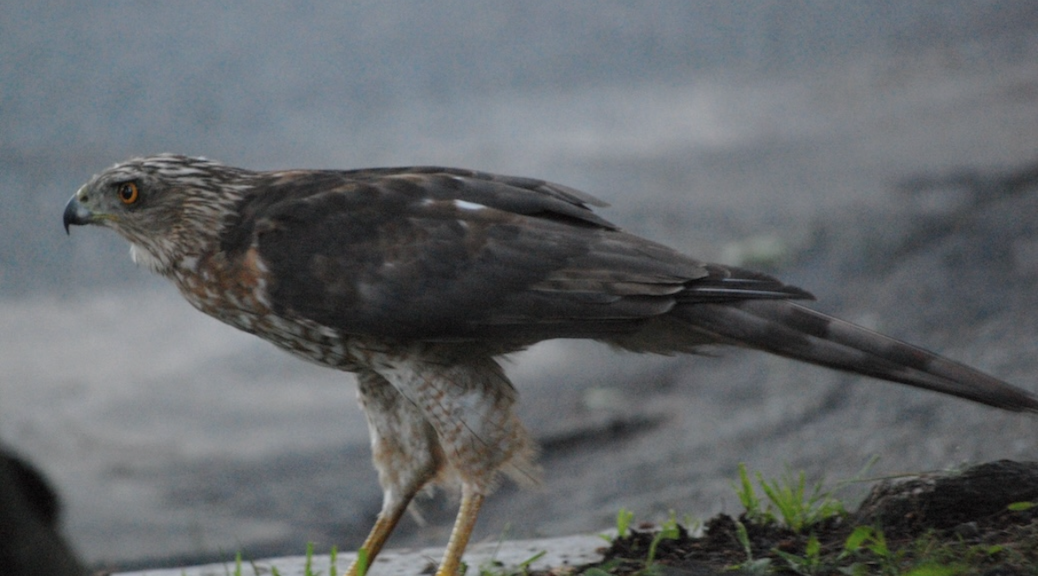
Across the globe, the accelerating loss of biodiversity is sounding alarms among scientists, conservationists, and communities that recognize nature as more than scenery—it is the living fabric of our survival. The United Nations warns we are in the midst of an extinction crisis “at least tens to hundreds of times faster than the natural process of extinctions.”
In Canada, where biodiversity is heralded as a national treasure, action is falling gravely short—and British Columbia is a prime example. Despite being the most biologically diverse province in the country, B.C. still lacks legislation specifically designed to protect species at risk.
“We’re the only province in the entire country that doesn’t have species at risk legislation,” says Cortes Island biologist Sabina Leader Mense. “It’s a travesty.”
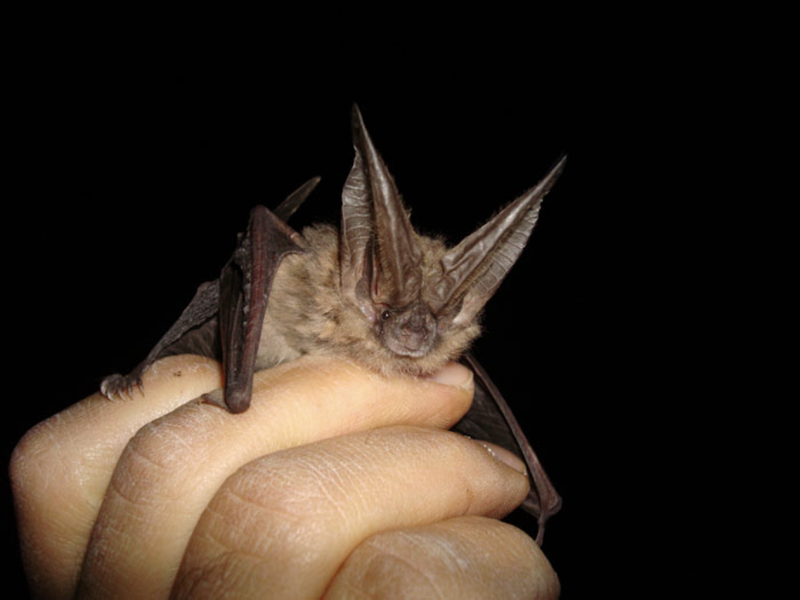
Townsend’s Big Eared Bat – Photo by Deser LCC via Flickr (CC By 2.0)
The Friends of Cortes Island’s (FOCI) Species At Risk program has identified at least 33 species that live year-round or seasonally on Cortes Island, including the endangered Northern Goshawk, the elusive Townsend’s Big-Eared Bat, and the recently rediscovered Silver-Spotted Skipper butterfly. These species are not just data points—they’re vital participants in an ecosystem still rich with relatively undisturbed forests, coastal shorelines, and marine life.
“We are fortunate to have so many amazing species here,” says Helen Hall, Executive Director of FOCI. “Cortes has not been as developed as much as some of the other islands. We still have large intact areas of forest and a really good marine ecosystem.” But this haven is fragile. “Some species still evidenced here are disappearing from other areas because of habitat loss and degradation.”
A Broken System
The federal government’s Species at Risk Act (SARA) was created in 2002 to address this decline, but it largely applies only to federal lands and does not include species of “special concern.” Even worse, the advisory body behind SARA—the Committee on the Status of Endangered Wildlife in Canada (COSEWIC)—is under-resourced. Despite an estimated 5,000 species potentially at risk across Canada, COSEWIC processes only 60 assessments or reassessments per year. At this rate, it would take over a century to evaluate all species.
In 2023, COSEWIC listed 875 species as Extinct, Extirpated, Endangered, Threatened, or of Special Concern. Among these, 46 were formally declared Extinct or Extirpated, and that number may be as high as 95.
“Without historical data, we have no perspective of what’s being lost,” says FOCI President Mike Moore. “If that’s not also coupled with money that goes to changing policy to protect habitat … then counting species is really just gathering data to write a really nice epitaph for the gravestones of species that go extinct.”
The Auditor General’s report from 2023 echoed this, calling on Environment and Climate Change Canada to increase support for COSEWIC and set targets aligned with the urgency of the biodiversity crisis.
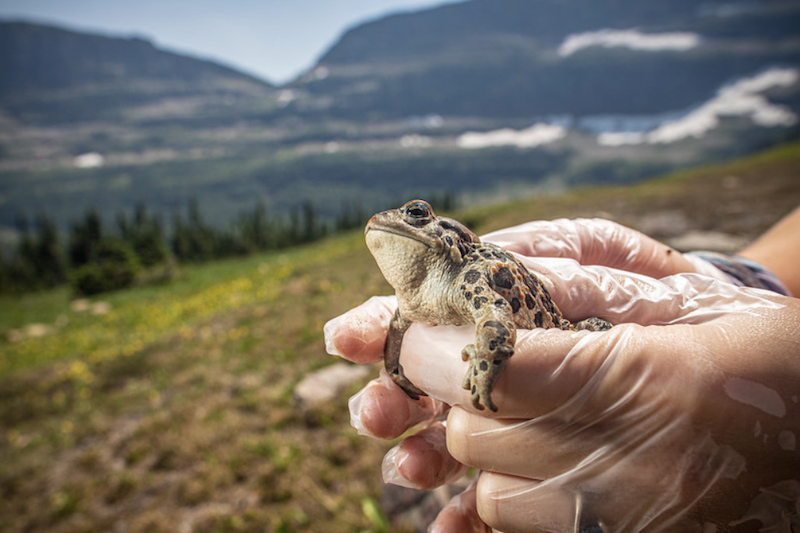
Holding up a Western Toad – Glacier National Park Service via Flickr (Public Domain)
Cortes Island: A Living Laboratory
Cortes Island serves as both a refuge and a bellwether. Local species like the Western Toad have vanished in recent years—likely due to habitat loss, pesticides, road mortality, and fungal disease. “We think they have pretty much disappeared,” says Hall. “The last sighting was a decade ago in 2015.”
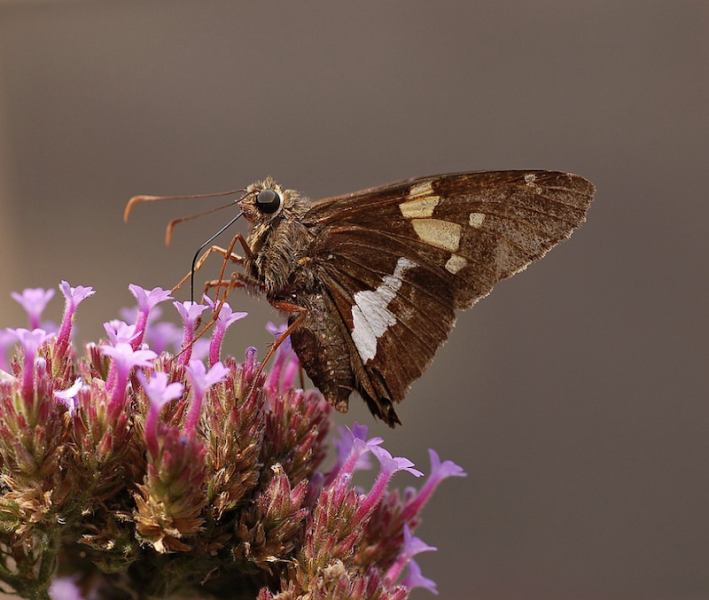
Silver-spotted Skipper by Derek Ramsey (Own work) via Wikimedia (GNU Free Documentation License 1.2)
The community has also rediscovered species long thought missing, such as the Silver-Spotted Skipper butterfly, last seen in B.C. over 50 years ago until it was found near giant vetch plants on the island. Others, like the Northern Pygmy Owl and Coastal Cutthroat Trout, face habitat pressure from logging and development.
“These trout are really indicative of a healthy ecosystem,” says Sabina Leader Mense. “They need clean water, clean gravel, and a strong shoreline. A decline in their population is indicative of a change in their habitat.”
FOCI’s species at risk program feeds local observations into the provincial Conservation Data Centre. “We are running our program to find out more about these species, their status here and how that fits into the bigger picture,” says Hall. This citizen science approach empowers residents to contribute to conservation, even if it’s just noticing an owl, a bat, or a toad.
A Call for Legislative Action
Back in 2015, Cortes youth championed Bill M 211, a proposed B.C. endangered species act. “When the Liberals were in power, the NDP were really promoting the bill,” recalls Leader Mense. “The disappointment is that it’s 2023 now and the NDP are in power and haven’t gone anywhere near doing that.”

Legislative Buildings in Victoria – Photo by Blake Handley via Flickr (CC BY 2.0)
“While the province has since committed to recommendations from the Old Growth Strategic Review, including biodiversity protection, the long-promised species at risk legislation remains absent. As Leader Mense puts it, “We need to all step up, talk to our MLAs and support a biodiversity law for British Columbia.”
From Local Action to Global Responsibility
According to the 2020 Wild Species Report, Canada lacks sufficient data on 590 of its native bee species, and for more than 30,000 species nationwide, no distribution maps exist. “If not documented, species might disappear without us noticing,” the report warns.
Cortes Island reminds us what’s at stake. “FOCI is working with Species at Risk on Cortes Island,” says Moore. “It’s no t just about finding out if we have Screech Owls—it’s also trying to find their nesting trees. We do have logging on the island … and we need to protect them.”
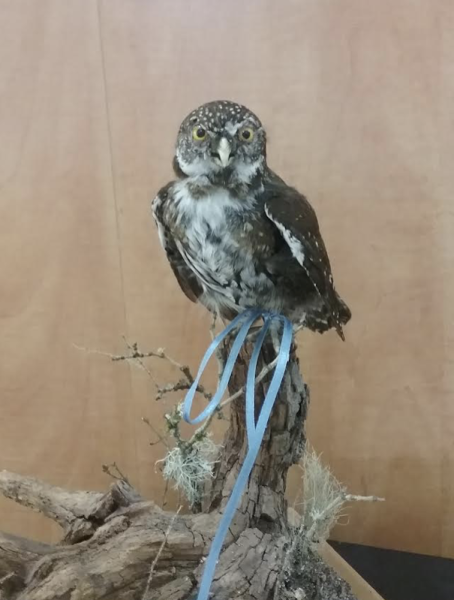
Pygmy Owl mounted at Wild Cortes – Photo by Donna Collins/ Wild Cortes
From amphibians and owls to trout and snails, the island’s diverse life forms are indicators of both what we still have—and what we risk losing.
Whether through observation, education, or advocacy, residents of Cortes Island are showing how a small community can rise to meet a global emergency.
As Bruce Cockburn once sang, “The trouble with normal is it always gets worse.”
Without action—on Cortes, in British Columbia, and across the country—“normal” may soon mean silence where once there was song, flight, and frog song.
The Cortes Island Resonance Series:
- Restoring Life to Dillon Creek
- Friends of Cortes Island at Mansons Landing Provincial Park
- 30 Years of Foreshore Monitoring on Cortes Island
- European Green Crabs Reach Cortes Island
- Sabina Leader Mense & the Wolves of Cortes: A Story of Coexistence
- Vanishing Voices: The Global At Risk Species Crisis and Cortes Island
- The Call That Changed Everything: Western Screech Owls Return to Cortes Island
- The Story of the Island’s Streamkeepers
Top image credit: Northern Goshawk – by James Wang via Flickr (CC BY 2.0)
The Cortes Island Resonance series is produced with financial assistance provided by the Strathcona Regional District ‘s Grant In Aid Program and the Cortes Island Community Foundation.

